De: R$ 0,00Por: R$ 436,13ou X de
De: R$ 0,00Por: R$ 436,13ou X de
| Origem | Literatura Estrangeira |
|---|---|
| Quantidade de Páginas | 122 |
| Acabamento | Capa Comum |
| Autores | Christopher J. Hughes |
| Idioma | Inglês |
| Edição | 0 |
| Selo | Morgan and Claypool Publishers |
 Introdução ao Red Team Operations - Um guia básico para suas operações de Red Team
Introdução ao Red Team Operations - Um guia básico para suas operações de Red Team
Dialética
R$ 83,90 à vista Uma Estrutura Conceitual para o Estudo da Computação Natural
Uma Estrutura Conceitual para o Estudo da Computação Natural
Dialética
R$ 73,40 à vista Sangue, suor e pixels - Os dramas, as vitórias e as curiosas histórias por trás dos videogames
Sangue, suor e pixels - Os dramas, as vitórias e as curiosas histórias por trás dos videogames
HarperCollins Brasil
R$ 72,90 à vista A democratização dos arquivos no judiciário brasileiro - Práticas de difusão do acervo arquivístico dos Tribunais de Ju
A democratização dos arquivos no judiciário brasileiro - Práticas de difusão do acervo arquivístico dos Tribunais de Ju
Dialética
R$ 73,40 à vista A informação jurídica nas mídias e redes sociais - Contributos para o capital social
A informação jurídica nas mídias e redes sociais - Contributos para o capital social
Dialética
R$ 120,65 ou até 2x sem juros Satisfação do consumidor em lojas de free shop - Aplicando o Método do Incidente Crítico e o Modelo de Fishbein
Satisfação do consumidor em lojas de free shop - Aplicando o Método do Incidente Crítico e o Modelo de Fishbein
Dialética
R$ 73,40 à vista Mecanismo de cibervigilância baseado em aprendizado de máquina para detecção de malwares
Mecanismo de cibervigilância baseado em aprendizado de máquina para detecção de malwares
Dialética
R$ 120,65 ou até 2x sem juros Garota Online (Vol. 1)
Garota Online (Vol. 1)
VERUS
R$ 49,90 à vista Teoria da recursão
Teoria da recursão
UNESP
R$ 69,00 à vista Desatando os nós da rede - 45 exercícios de redes de computadores
Desatando os nós da rede - 45 exercícios de redes de computadores
Dialética
R$ 68,15 à vista RINOCERONTES ALADOS
RINOCERONTES ALADOS
BesouroBox
R$ 44,90 à vista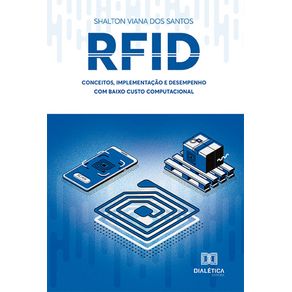 RFID
RFID
Dialética
R$ 57,65 à vista Design de cenários de videogames
Design de cenários de videogames
Editora Intersaberes
R$ 83,20 à vista Histórico dos jogos
Histórico dos jogos
Editora Intersaberes
R$ 70,00 à vista Prototipagem e Testes de Usabilidade
Prototipagem e Testes de Usabilidade
Editora Intersaberes
R$ 90,40 à vista Método Monte Carlo de varredura de domínio (MCS)
Método Monte Carlo de varredura de domínio (MCS)
Dialética
R$ 89,15 à vista Quais artistas visuais nos museus? - O avanço das artistas mulheres no acervo do MASP
Quais artistas visuais nos museus? - O avanço das artistas mulheres no acervo do MASP
Dialética
R$ 204,65 ou até 3x sem juros Inteligência Contra o Crime Organizado no Ambiente Corporativo - A tecnologia e a metodologia no combate ao crime no mu
Inteligência Contra o Crime Organizado no Ambiente Corporativo - A tecnologia e a metodologia no combate ao crime no mu
Dialética
R$ 241,50 ou até 3x sem juros Sangue, suor e pixels - Os dramas, as vitórias e as curiosas histórias por trás dos videogames
Sangue, suor e pixels - Os dramas, as vitórias e as curiosas histórias por trás dos videogames
HarperCollins Brasil
R$ 72,90 à vista Modelagem Matemática de Doenças Infecciosas - Com aplicação em Python para COVID-19
Modelagem Matemática de Doenças Infecciosas - Com aplicação em Python para COVID-19
Dialética
R$ 120,65 ou até 2x sem juros Competência Informacional e universidades com oferta de cursos na Educação a Distância - O Gestor Bibliotecário em foco
Competência Informacional e universidades com oferta de cursos na Educação a Distância - O Gestor Bibliotecário em foco
Dialética
R$ 120,65 ou até 2x sem juros Garota Online (Vol. 1)
Garota Online (Vol. 1)
VERUS
R$ 49,90 à vista Teoria da recursão
Teoria da recursão
UNESP
R$ 69,00 à vista Re-identificação de pessoas em múltiplas câmeras por meio de imagens digitais: estudo de caso - Análise e avaliação do
Re-identificação de pessoas em múltiplas câmeras por meio de imagens digitais: estudo de caso - Análise e avaliação do
Dialética
R$ 57,65 à vista Feel The Future: A revolução digital não tem surpresa, tem surpreendidos
Feel The Future: A revolução digital não tem surpresa, tem surpreendidos
e-galáxia
R$ 47,90 à vista Diálogos Inseguros
Diálogos Inseguros
Dialética
R$ 128,90 ou até 2x sem juros Ciência da Informação: organização, preservação e difusão
Ciência da Informação: organização, preservação e difusão
Dialética
R$ 136,40 ou até 2x sem juros StratVision
StratVision
Dialética
R$ 68,15 à vista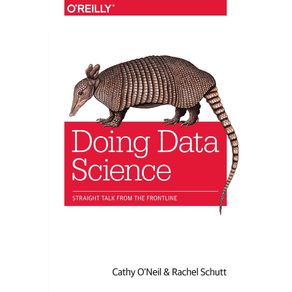 Doing Data Science
Doing Data Science
OReilly Media
R$ 431,11 ou até 3x sem juros Prototipagem e Testes de Usabilidade
Prototipagem e Testes de Usabilidade
Editora Intersaberes
R$ 90,40 à vista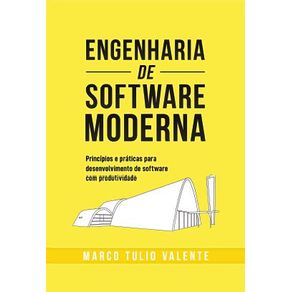 Engenharia de Software Moderna
Engenharia de Software Moderna
Independente
R$ 100,90 ou até 2x sem juros Explorando os fundamentos da Linguagem C para uso em Métodos Numéricos
Explorando os fundamentos da Linguagem C para uso em Métodos Numéricos
Dialética
R$ 99,65 à vista Quais artistas visuais nos museus? - O avanço das artistas mulheres no acervo do MASP
Quais artistas visuais nos museus? - O avanço das artistas mulheres no acervo do MASP
Dialética
R$ 204,65 ou até 3x sem juros Desenvolvendo aplicativo na área ambiental - Como ensinar a criação de aplicativo fácil, intuitivo e gratuito
Desenvolvendo aplicativo na área ambiental - Como ensinar a criação de aplicativo fácil, intuitivo e gratuito
Dialética
R$ 89,15 à vista A informação jurídica nas mídias e redes sociais - Contributos para o capital social
A informação jurídica nas mídias e redes sociais - Contributos para o capital social
Dialética
R$ 120,65 ou até 2x sem juros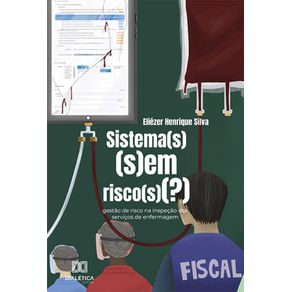 Sistema(s) (s)em risco(s)(?) - Gestão de risco na inspeção dos serviços de enfermagem
Sistema(s) (s)em risco(s)(?) - Gestão de risco na inspeção dos serviços de enfermagem
Dialética
R$ 204,65 ou até 3x sem juros Mecanismo de cibervigilância baseado em aprendizado de máquina para detecção de malwares
Mecanismo de cibervigilância baseado em aprendizado de máquina para detecção de malwares
Dialética
R$ 120,65 ou até 2x sem juros Desatando os nós da rede - 45 exercícios de redes de computadores
Desatando os nós da rede - 45 exercícios de redes de computadores
Dialética
R$ 68,15 à vista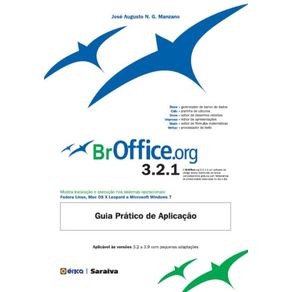 BrOffice.org 3.2.1: Guia Prático de Aplicação
BrOffice.org 3.2.1: Guia Prático de Aplicação
Editora Érica
R$ 107,00 ou até 2x sem juros Feel The Future: A revolução digital não tem surpresa, tem surpreendidos
Feel The Future: A revolução digital não tem surpresa, tem surpreendidos
e-galáxia
R$ 47,90 à vista Diálogos Inseguros
Diálogos Inseguros
Dialética
R$ 128,90 ou até 2x sem juros Ciência da Informação: organização, preservação e difusão
Ciência da Informação: organização, preservação e difusão
Dialética
R$ 136,40 ou até 2x sem juros Doing Data Science
Doing Data Science
OReilly Media
R$ 431,11 ou até 3x sem juros Serious games
Serious games
Editora Intersaberes
R$ 63,00 à vista Histórico dos jogos
Histórico dos jogos
Editora Intersaberes
R$ 70,00 à vista